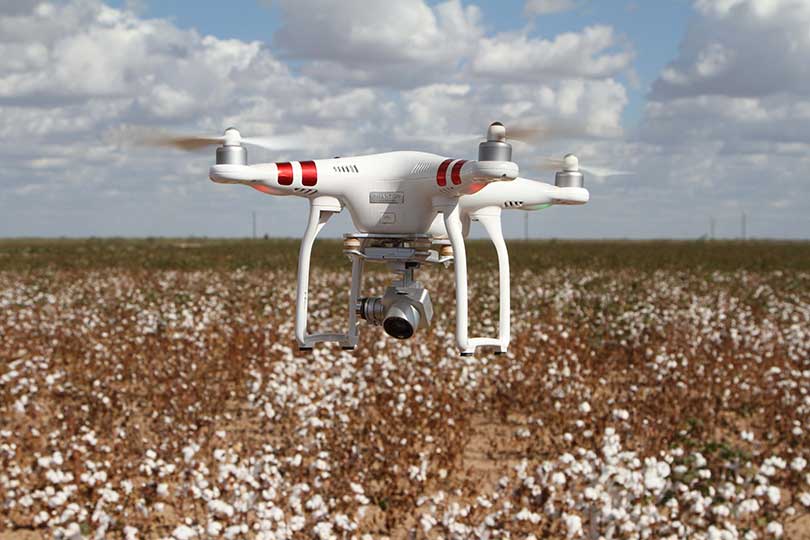Unmanned aerial vehicles (UAVs) may help provide solutions to crop diseases and plant stress-related events such as drought, according to Texas A&M AgriLife researchers.
The use of manned aircraft and satellite data to detect crop diseases is costly and the image resolution is commonly too low. But research shows the use of UAVs can provide large amounts of data on crop conditions to make this process more efficient and increase profitability for farmers.
A 40-member team of researchers, consisting of multiple flight teams, are using UAVs and sensing technology to find solutions to crop diseases and plant stress-related events.
Dr. Alex Thomasson, Texas A&M AgriLife Research agricultural engineer, explained some of the possibilities at the Texas Plant Protection Association Conference in Bryan. Thomasson said field activities using rotary and fixed wing UAVs have concentrated at the 1,400-acre Texas A&M Farm near College Station.
“Rotary aircraft tend to fly lower and slower than fixed-wing and provide much more detailed images but cover less ground,” Thomasson said. “Among the objectives of the research program include developing workflows and techniques for precision agriculture, and phenotyping, which means measuring the physical characteristics of plants.”
Aerial sensors help speed up and make the phenotyping process more efficient, Thomasson said.
Aerial images help determine the temperature, height and other important characteristics of the plant.
Working with radiometric reflectance targets is one of the challenges in producing repeatable images. Specially prepared tiles placed in the field help locate ground points in a crop and quantify how much light the crop reflects.
“Our goals of the project are to provide next-day UAV remote-sensing data to the research team,” Thomasson said.
Researchers, along with the U.S. Department of Agriculture, are using UAVs to help detect and reduce the expenses to treat and prevent cotton root rot. The technology could help protect cotton farmers from costly yield losses and unnecessary expenses by allowing them to treat only the infected areas of a field.
“Cotton root rot tends to stay in the same field areas year after year,” Thomasson said. “By using UAVs, we can pinpoint the areas where cotton root rot is prevalent. You can apply fungicide in that part of the field to lessen the threat rather than having to treat a whole crop and incur unnecessary expense.”
One challenge to using the technology is uploading and transmitting large amounts of data in rural areas, according to Thomasson.
“Big data overall—collection storage, distribution and analysis—continues to be an issue to resolve,” Thomasson said.

